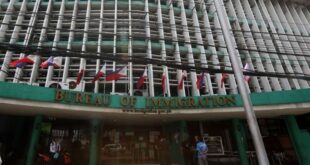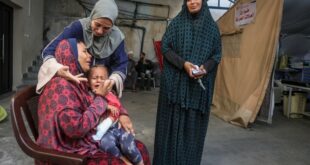 President Ferdinand R. Marcos’ remarks at the launching of the Bangko Sentral ng Pilipinas’ commemorative coins underline the significance of the 125th Anniversary of Philippine Independence. Citing a country’s currency as a mark of its sovereignty, he applauded the BSP’s adoption of state-of-the art technology in minting the country’s first-ever colored, non-circulation commemorative coins. He noted how far the country has kept pace with “the best technologies, the best techniques, everything that is good and new for our country.”
President Ferdinand R. Marcos’ remarks at the launching of the Bangko Sentral ng Pilipinas’ commemorative coins underline the significance of the 125th Anniversary of Philippine Independence. Citing a country’s currency as a mark of its sovereignty, he applauded the BSP’s adoption of state-of-the art technology in minting the country’s first-ever colored, non-circulation commemorative coins. He noted how far the country has kept pace with “the best technologies, the best techniques, everything that is good and new for our country.”
As pointed out by BSP Governor Felipe Medalla, the coins bear the colors of the Philippine flag: first, blue: kapayapaan or peace; second, red: kagitingan or bravery; yellow: kalayaan or independence, and soberanya or sovereign.
The three denominations reflect vital historical highlights. The 100-Piso coin commemorates the 1898 declaration of Philippine Independence while the 20-Piso coin features the Barasoain Church in Malolos, Bulacan, which served as the birthplace of the First Republic. The 5-Piso coin meanwhile, honor the bravery of the Filipinos who fought for the country’s sovereignty in the Philippine-American War.
Theme for this year’s celebration is: Kalayaan. Kinabukasan. Kasaysayan. (Freedom. Future. History.). Freedom was asserted by Emilio Aguinaldo as he proclaimed Philippine independence on June 12, 1898. That was a short-lived episode as American colonialism supplanted three centuries of Spanish rule at the turn of the century. Only after the United States ceded sovereignty on July 4, 1946 did Philippine independence flourish anew.
While history is one of the three focal points, today’s Independence Day observance rightly recognizes the future as its centerpiece.
2028 is the end-year of the current Philippine Development Plan that seeks to achieve “deep economic and social transformation to reinvigorate job creation and accelerate poverty reduction by steering the economy back on a high-growth path.”
Latest statistics show that the economy has resumed its steady growth trajectory as job creation is again on the uptrend, inflation has been reined in, and investment prospects have been buoyed by a steady stream of commitments from countries and companies that are upbeat about the country’s medium- and long-term prospects.
While the previous administration’s ambition to elevate the country to middle-income status by 2020 was derailed by the onset of the Covid-19 pandemic, the National Economic and Development Authority (NEDA) now projects that this will be attained by 2025. Under the World Bank’s updated standards, an upper middle-income economy or country has a gross national income (GNI) per capita of between $4,046 and $12,535.
Commendably, the Marcos administration has placed social protection on equal footing with its economic growth program. This assures millions of impoverished Filipinos they will not be left behind as the other sectors enjoy the fruits of prosperity.
Much work still needs to be done in terms of raising the Philippines’ attainment of Sustainable Development Goals in critical areas such as environment protection and climate change adaptation and mitigation, as well as in freedom from hunger which was highlighted in the multi-sectoral summit to support proper nutrition for Filipino children within the first thousand days of life.
The work of building a stronger edifice for Philippine independence and democracy continues.
*****
Credit belongs to : www.mb.com.ph
 Atin Ito First Filipino Community Newspaper in Ontario
Atin Ito First Filipino Community Newspaper in Ontario






